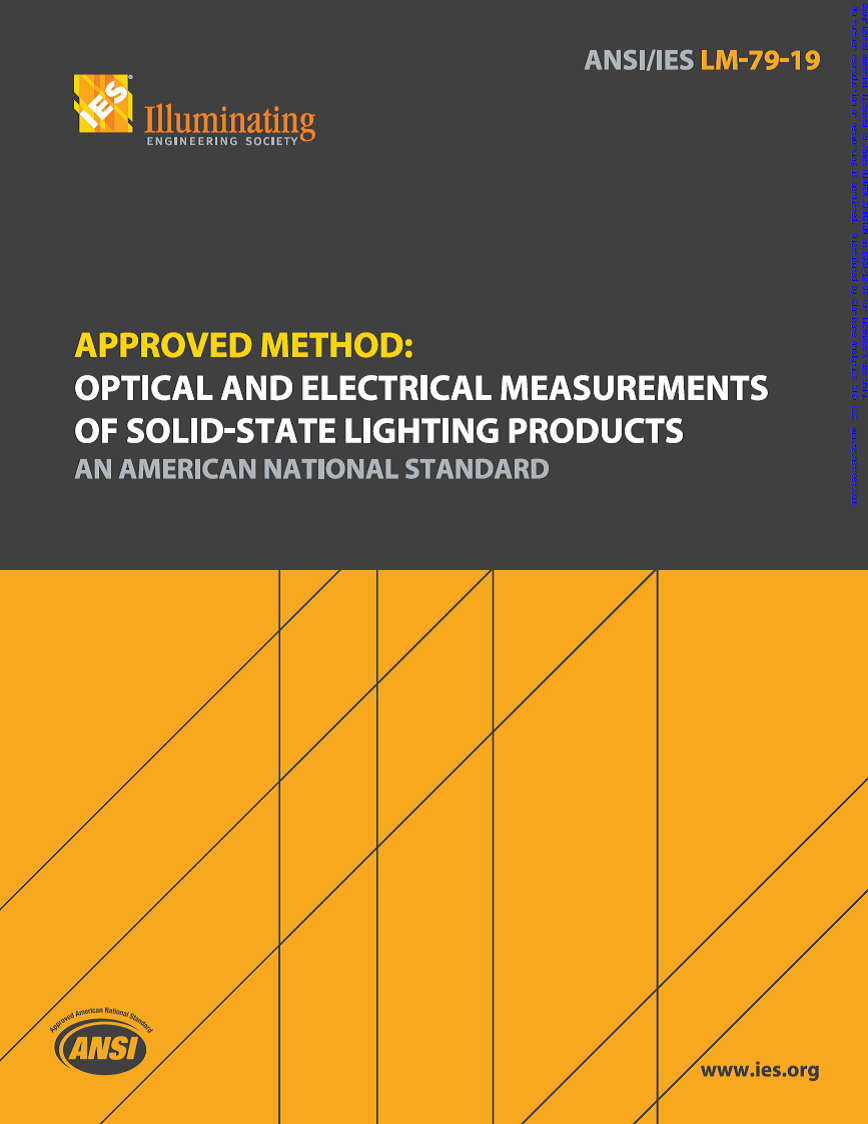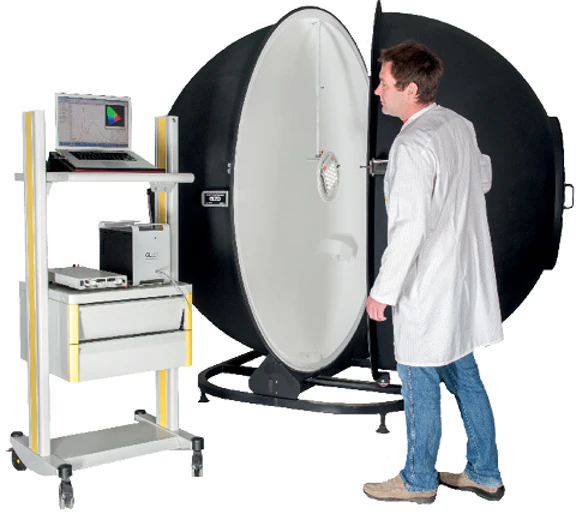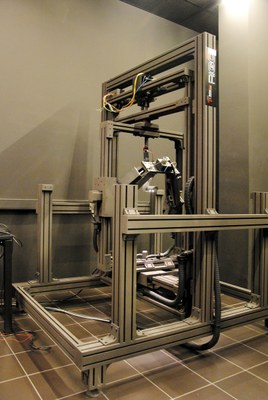LM-79 is a standard that defines how the performance of an LED lamp or fixture should be measured. A test according to LM-79 is carried out at a point in time and at a single temperature. Therefore, it gives no indication as to how the performance of the device under test (DUT) might change over time or how it might be affected by different ambient temperatures.
The full name of the latest version of this standard is “IES LM-79-19 Approved Method: Optical and Electrical Measurements of Solid State Lighting Products”.

LM-79 was written and is published by the Illuminating Engineering Society of North America. It only applies to solid state (ie LED) lighting products and cannot be used for light fittings with other light sources, such as fluorescent, incandescent or high intensity discharge lamps.
LM-79 is important to lighting designers, specifiers and manufacturers. It provides a standard method of testing LED lamps and fixtures so that the data from different brands and models can be directly and objectively compared.
LM-79 is concerned with measuring two groups of LED lamp & luminaire characteristics:
The electrical data that should be recorded in any LM-79 compliant test will include:
The optical data gathered during a photometric test compliant with LM-79 will typically include the following:
Other data such as radiant intensity or photon flux might also be gathered if required by the sponsor of the test.
LM-79 only relates to complete LED lamps or LED luminaires.
Because LED lamps and luminaires will always have a driver and associated hardware (diffusers, reflectors, a body housing, a heatsink etc) the electrical measurements are of the supply entering the fitting (not entering the LEDs). We therefore sometimes speak of “circuit watts” meaning the power consumption of the entire fitting including the driver, not just of the LEDs.
Similarly, the optical measurements relate to the output from the fitting, after the light has passed through any diffuser, reflector or other optical device. We sometimes therefore speak of “luminaire lumens” to mean the lumen output of the luminaire as opposed to “LED lumens” which would be the output of the LEDs before taking into account the effect of any lens or diffuser.

Above: an LED lamp, an LED floodlight and an LED downlight. LM-79 is the test standard that is appropriate for these products. All these products are all complete in their own right, including both LEDs and the necessary driver.
Below: an LED chip and some COB devices. LM-79 is not appropriate for these. Testing according to LM-80 would be suitable.

You probably don’t need to read this, but if you are coming back to the field of lighting after an absence of a few years, a lot has changed while you were away. Welcome back – you might find this helpful.
Absolute v Relative Photometric Measurement
LM-79 requires that photometric measurements should be absolute. This means that the test should measure the actual lumen output from the device under test (DUT).
This is different from the photometric testing that was conducted in the pre-LED era. In the days of fluorescent tubes and high intensity discharge lamps it was the practice to publish standardised data for a particular lamp and then express the light output from a fixture in terms of its light output ratio (LOR). The LOR expressed the % of the light from the standardised source that was actually emitted from the luminaire, so a fluorescent louver fitting might have had an LOR of 0.7 – meaning that 70% of the light generated by the lamp for which it was designed emerged from the luminaire, so the balance of 30% was lost internally. This made it easy to produce photometric data for a series of light fittings (for example, data for a 4 x 14W and 4 x 21W fixture could be generated from just one photometric test). This was relative photometry.
Absolute photometry, as is required by LM-79, does not recognise the concept of LOR. This is entirely logical because the LED industry is still moving at such a pace in terms of improving efficiencies and product design, that it is not practical to define standardised output data for LEDs.
Before the test can begin the device under test (DUT) should be connected to a suitable, stable, power supply in a draught-free environment. The ambient temperature should be 25º and the fitting should be powered up and its own temperature allowed to stabilise. This will typically take from 30 minutes to 2 hours.
LM-79 gives detailed instructions for how the equipment to be used should be set-up, calibrated and used. In brief, LM-79 describes two main types of equipment that may be used – integrating spheres and goniophotometers.
An integrating sphere is an instrument that measures the total luminous flux (lumen output) of an LED lamp or fixture. Most integrating spheres also measure a number of other optical characteristics of a lamp or luminaire, including the spectral power distribution – how the light radiation being emitted is distributed over the visible spectrum.

An integrating sphere. These are most practical for the photometric testing of lamps and smaller light fittings. They measure the total lumen output and can also be used to measure the light quality and its spectral composition but they do not measure the distribution of that light.
A goniophotometer measures the distribution of the light emitted by a lamp or light fitting. From that data they will also calculate the total luminous flux (the total light output) and some, depending on the sensors they use, can also measure the spectral composition of the light and how that varies at different positions around the device under test (DUT).

A goniophotometer. These vary substantially in their design, shape and size. In this goniophotometer (pictured) the DUT is held stationary while sensors rotate round it on different axes measuring the light output.
Goniophotometers vary substantially in their design, size and shape, from small desktop models to machines measuring 15-20m across. To ensure accuracy and consistency, LM-79 only permits the use of type C goniophotometers. In these, the DUT is held in one position and sensors rotate around it on different axes measuring the intensity of the light it is emitting every few degrees of rotation. In other types of goniophotometers (types A and B) one or more of the sensors will be stationary and the DUT will move in relation to them. This can give rise to inaccuracies because the movement of air round an LED light fitting will induce a cooling effect which in turn affects the performance of the LEDs. With type C goniophotometers this effect is minimised because the DUT is held stationery and only the sensors move.
From the data it captures the goniophotometer and the associated recording devices construct the photometric data files that the lighting designer can use later to model the effect of the DUT being installed in different settings.